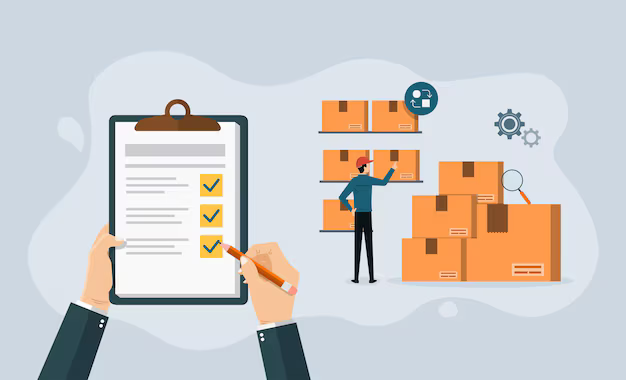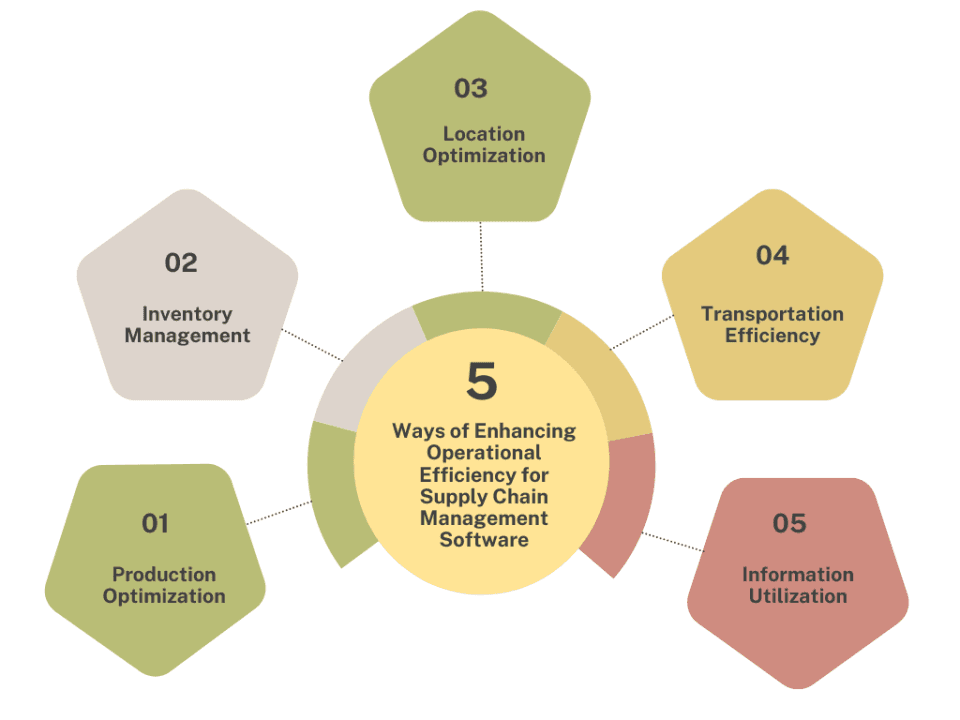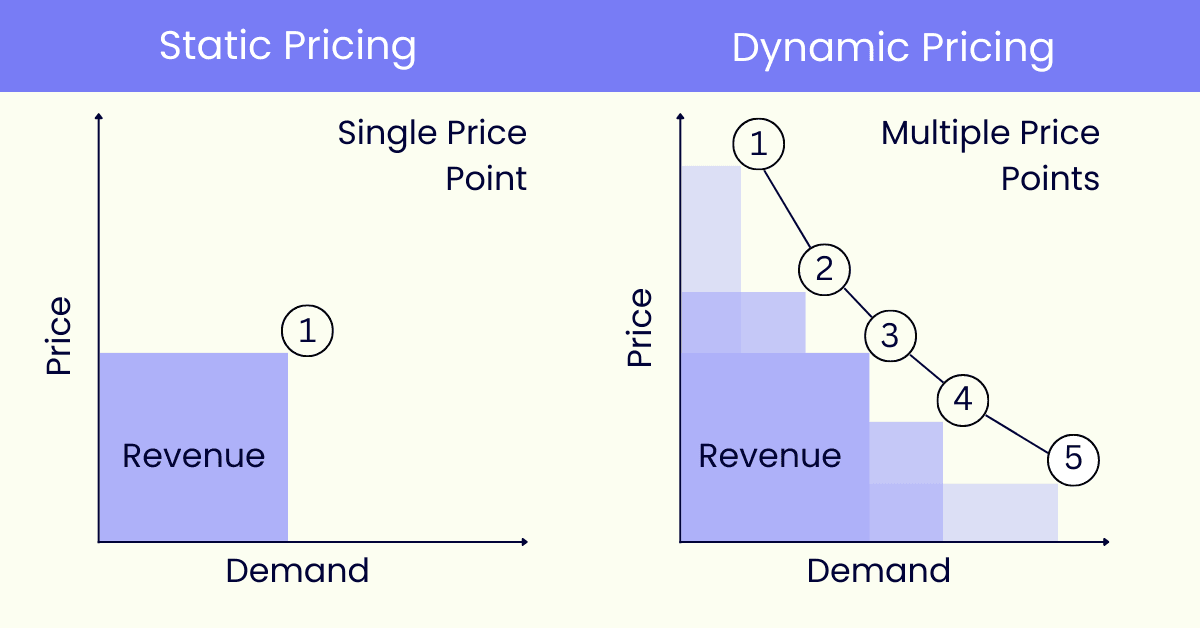Unlock Efficiency and Profitability Through Advanced Data Analytics
"In 2023, logistics companies leveraging data analytics reduced operational costs by an average of 20%, outpacing competitors and gaining significant market share."
In an industry where margins are razor-thin and competition is intensifying, cutting costs isn't just beneficial—it's crucial for survival. Are you a decision-maker in the logistics sector seeking to optimize operations, enhance efficiency, and boost your bottom line?
This comprehensive guide reveals 10 powerful data-driven strategies to significantly reduce your logistics costs. Packed with updated real-world examples, expert insights, and actionable steps, we'll explore how advanced data analytics can transform your logistics operations in 2024 and beyond.
Introduction
Did you know that inefficiencies in logistics can eat up to 30% of a company's revenue? In today's fast-paced market, relying on traditional methods is no longer sufficient. The logistics industry is evolving rapidly, with challenges ranging from volatile fuel prices and complex supply chains to stringent regulations and increased customer expectations.
But here's the good news: Advanced data analytics offers a solution, turning these challenges into opportunities for significant cost savings and efficiency gains. This guide will show you how to harness the power of data to revolutionize your logistics operations.
Are you ready to slash your logistics costs by up to 20%? Let's dive in.
Meet Sarah: A Logistics Manager's Quest for Efficiency
Sarah Thompson, COO of a global freight company.
Sarah Thompson, the Chief Operating Officer of a global freight company, was grappling with soaring operational costs and shrinking profit margins. Despite implementing industry best practices, the numbers just didn't add up.
"We thought we were doing everything right, but our costs kept climbing, and we couldn't figure out why," Sarah recalls.
Determined to find a solution, Sarah turned to advanced data analytics. What followed was a transformation that not only slashed costs but also positioned her company as an industry leader.
1. Optimizing Route Planning
The Challenge: Inefficient routing leads to increased fuel consumption, longer delivery times, and higher operational costs.
Data-Driven Solution:
- Real-Time Traffic Analysis: Utilizing GPS and live traffic data to avoid congestion and delays.
- Weather Forecast Integration: Adjusting routes based on predictive weather analytics.
- AI-Powered Algorithms: Using machine learning to predict optimal routes by analyzing historical and real-time data.
- Dynamic Route Adjustment: Adapting routes on-the-fly in response to unforeseen events.
Results:
- Cost Reduction: Up to 15% savings in fuel costs.
- Improved Delivery Times: Enhanced punctuality, leading to increased customer satisfaction.
- Environmental Impact: Reduced carbon footprint due to lower fuel consumption.
Example:
In 2023, FedEx implemented AI-driven route optimization, resulting in a 12% reduction in delivery times and significant fuel savings, amounting to $150 million in cost reductions.

Data analytics can enhance route planning saving time & fuel
2. Enhancing Fuel Efficiency
The Challenge: Fuel costs account for up to 30% of logistics expenses.
Data-Driven Solution:
- Driver Behavior Monitoring: Using telematics to identify habits like excessive idling, speeding, or harsh braking.
- Vehicle Performance Analysis: Optimizing engine performance through regular data-driven maintenance.
- Fuel Consumption Tracking: Real-time monitoring to detect anomalies and inefficiencies.
- Eco-Driving Training Programs: Educating drivers based on data insights.
Results:
- Fuel Savings: Companies can save up to 10% on fuel costs.
- Sustainability: Reduced emissions contribute to corporate social responsibility goals.
Example:
In 2022, DHL used data analytics to optimize fuel efficiency, saving over $200 million and reducing carbon emissions by 15%.

Findign ways to reduce fuel consumption thanks to data analytics is usually the single most impactful thing a transport company can do to increase its margins.
3. Predictive Maintenance
The Challenge: Unscheduled vehicle downtime leads to delays and increased repair costs.
Data-Driven Solution:
- IoT Sensor Data Collection: Monitoring engine health, tire pressure, brake systems, and more.
- Predictive Analytics Models: Anticipating maintenance needs before failures occur.
- Optimized Maintenance Scheduling: Minimizing disruptions by aligning maintenance with operational downtime.
Results:
- Cost Reduction: Maintenance costs reduced by up to 25%.
- Increased Uptime: Vehicle availability improved by 20%.
- Safety Improvement: Fewer breakdowns lead to safer operations.
Example:
UPS implemented predictive maintenance across its fleet, cutting vehicle breakdowns by 60% and saving an estimated $100 million annually.

Going from reactive maintenance to predictive maintenance can radically transform a logistics company.
4. Inventory Management Optimization
The Challenge: Overstocking ties up capital and increases storage costs, while understocking leads to missed sales and dissatisfied customers.
Data-Driven Solution:
- Advanced Demand Forecasting: Using AI to predict demand based on historical data, market trends, and external factors.
- Just-In-Time Inventory Systems: Aligning inventory levels closely with actual demand to reduce holding costs.
- Warehouse Analytics: Optimizing storage layouts, picking paths, and inventory placement using data.
- Automated Reordering: Setting thresholds for automatic stock replenishment.
Results:
- Inventory Costs: Reduction of holding costs by 25%.
- Order Fulfillment: Improved accuracy and speed, enhancing customer satisfaction.
- Capital Allocation: Freed-up capital can be invested in other areas of the business.
Example:
Amazon employs sophisticated analytics for inventory management, reducing storage costs and achieving same-day delivery in many regions.

5. Reducing Operational Inefficiencies
The Challenge: Inefficiencies in processes lead to wasted time, resources, and increased costs.
Data-Driven Solution:
- Process Mapping and Analysis: Identifying bottlenecks and redundancies through data visualization tools.
- Automation Opportunities: Implementing AI and robotics in repetitive tasks.
- Performance Metrics Tracking: Monitoring Key Performance Indicators (KPIs) to assess efficiency.
- Continuous Improvement Programs: Using data to drive Lean and Six Sigma initiatives.
Results:
- Cost Savings: Operational expenses reduced by 18%.
- Productivity Increase: Enhanced throughput without additional resources.
- Employee Satisfaction: Automation of mundane tasks leads to higher job satisfaction.
Example:
In 2023, Maersk streamlined its operations using data analytics, saving over $120 million annually and increasing productivity by 15%.

5 Ways of Enhancing Operational Efficiency for Supply Chain Management Software
6. Dynamic Pricing Strategies
The Challenge: Static pricing models fail to maximize revenue in fluctuating markets.
Data-Driven Solution:
- Real-Time Market Analysis: Monitoring supply and demand trends to adjust prices.
- Competitive Intelligence: Tracking competitor pricing strategies using data scraping tools.
- Dynamic Pricing Algorithms: Adjusting prices based on predictive analytics.
- Customer Segmentation: Offering personalized pricing based on customer profiles.
Results:
- Revenue Increase: Boost margins by up to 12%.
- Customer Retention: Offering competitive and fair pricing enhances loyalty.
- Market Responsiveness: Ability to quickly adapt to market changes.
Example:
Uber Freight employs dynamic pricing, optimizing revenue while meeting customer needs, resulting in a 15% increase in profits in 2022.

Dynamic pricing can increase profits by leveraging data and optimized pricing algorithms.
7. Minimizing Empty Miles
The Challenge: Trucks returning empty after deliveries contribute to unnecessary costs and environmental impact.
Data-Driven Solution:
- Freight Matching Platforms: Using data to find backhaul opportunities and match loads with empty trucks.
- Network Optimization: Aligning routes and schedules to minimize empty runs.
- Collaborative Logistics: Partnering with other companies to share transportation resources.
- Predictive Demand Analysis: Anticipating where freight capacity will be needed next.
Results:
- Cost Reduction: Decrease in transportation costs by 15%.
- Environmental Benefits: Reduced fuel consumption lowers emissions significantly.
- Increased Revenue: Generating income on return trips.
Example:
Convoy, a digital freight network, reduced empty miles by 50% using data analytics, saving carriers millions in fuel costs.

8. Workforce Management
The Challenge: Labor costs are a significant expense, and inefficient scheduling leads to overtime costs and employee burnout.
Data-Driven Solution:
- Advanced Scheduling Software: Aligning staffing levels with predicted workload using AI.
- Performance Analytics: Identifying high-performing employees and areas for training.
- Shift Optimization: Creating schedules that maximize productivity and comply with labor regulations.
- Employee Engagement Platforms: Using data to improve morale and reduce turnover.
Results:
- Labor Cost Savings: Reduced overtime expenses by 12%.
- Employee Satisfaction: Improved morale leads to a 20% reduction in turnover rates.
- Enhanced Productivity: Better alignment of skills and tasks.
Example:
XPO Logistics optimized workforce management, increasing productivity by 8% and saving over $50 million in labor costs in 2023.

9. Enhancing Customer Satisfaction
The Challenge: Poor customer experiences lead to lost business, negative reviews, and damaged reputation.
Data-Driven Solution:
- Real-Time Delivery Tracking: Providing customers with live updates and estimated arrival times.
- Feedback Analysis: Using Natural Language Processing (NLP) to understand customer sentiments from reviews and feedback forms.
- Service Personalization: Tailoring services based on customer preferences and purchase history.
- Proactive Issue Resolution: Predicting and addressing potential problems before they affect the customer.
Results:
- Customer Retention: Increased repeat business by 20%.
- Reduced Costs: Lower customer acquisition costs due to higher loyalty.
- Brand Reputation: Positive reviews lead to increased market share.
Example:
In 2023, DHL improved customer satisfaction scores by 25% using advanced analytics, leading to a 10% increase in new customer acquisitions.
10. Regulatory Compliance and Risk Management
The Challenge: Non-compliance leads to hefty fines, legal issues, and reputational damage.
Data-Driven Solution:
- Automated Compliance Monitoring: Tracking regulations and ensuring company adherence using AI.
- Risk Analysis Models: Identifying potential areas of non-compliance and operational risks.
- Incident Prediction: Using analytics to prevent accidents and violations before they occur.
- Training Programs: Data-driven identification of training needs for staff.
Results:
- Cost Avoidance: Saved millions in potential fines and legal fees.
- Enhanced Reputation: Building trust with customers and partners by demonstrating compliance.
- Operational Continuity: Fewer disruptions due to legal issues.
Example:
Schneider National leveraged data analytics to maintain compliance, reducing violations by 35% and avoiding over $10 million in potential fines in 2022.

Some of the risks to monitor and track in the trucking industry.
Expert Roundtable: Insights from Industry Leaders
Moderator: How has data analytics transformed cost management in logistics?
Karen Jones, EVP at Ryder System:
"Data analytics allows us to pinpoint inefficiencies we couldn't see before, leading to substantial cost savings and a competitive edge."
Frank Appel, CEO of Deutsche Post DHL Group:
"Integrating data analytics into our operations has been a game-changer, enhancing both efficiency and customer satisfaction in ways we never thought possible."
Brad Jacobs, CEO of XPO Logistics:
"Leveraging data isn't just about cutting costs—it's about creating value for our customers and staying ahead in a rapidly evolving market."
Think About It: Applying These Strategies to Your Business
- Which of these areas presents the biggest cost challenge for your company?
- Do you currently collect the necessary data to implement these solutions?
- What immediate steps can you take to begin leveraging data analytics?
Identifying your unique challenges is the first step toward unlocking cost savings through data analytics.
Case Study: Transforming Operations with Mirage Metrics
Company: Transwin Logistics
Challenge: Rising operational costs were eroding margins, and inefficiencies plagued the supply chain.
Solution:
- Partnered with Mirage Metrics to implement a comprehensive data analytics platform tailored to their needs.
Areas Addressed:
- Route optimization
- Predictive maintenance
- Inventory management
- Workforce optimization
- Customer satisfaction enhancement
Results:
- Cost Savings: Reduced operational costs by 22% within the first year.
- Efficiency Gains: Improved delivery times by 18%.
- Customer Satisfaction: Increased repeat business by 25%.
- Return on Investment (ROI): Achieved a 300% ROI on the analytics platform investment.
Testimonial:
"Mirage Metrics didn't just provide us with data—they offered actionable insights that transformed our operations and significantly reduced costs. Their expertise was instrumental in our journey toward efficiency and profitability."
— COO of Transwin
Conclusion
In the competitive landscape of 2024, data analytics is no longer a luxury—it's a necessity for logistics companies aiming to reduce costs and stay ahead. By implementing the strategies outlined in this guide, you can unlock significant savings, drive efficiency, and position your company for long-term success.
The question isn't whether you should leverage data analytics—it's how soon you can start reaping the benefits.
Next Steps: Free Consultation Offer
Ready to transform your logistics operations and slash costs by up to 20%?
Mirage Metrics is offering a complimentary consultation to assess your current operations and identify opportunities for cost reduction through advanced data analytics.
👉 Schedule Your Free Data Analytics Consultation Now
References
- McKinsey & Company. (2023). Traveling toward the future: The path for transportation in a post-pandemic world. Retrieved from McKinsey
- FedEx Newsroom. (2023). FedEx's AI-driven route optimization. Retrieved from FedEx Newsroom
- Frost & Sullivan. (2023). Global Big Data Analytics Market in Transportation. Retrieved from Frost & Sullivan
- DHL Insights. (2022). Optimizing fuel efficiency with data analytics. Retrieved from DHL Insights
- Deloitte. (2023). Predictive maintenance and the smart factory. Retrieved from Deloitte Insights
- UPS Pressroom. (2023). UPS's predictive maintenance program. Retrieved from UPS Pressroom
- MIT Sloan Management Review. (2023). Inventory optimization using analytics. Retrieved from MIT SMR
- Amazon Investor Relations. (2023). Amazon's operational efficiency. Retrieved from Amazon
- PwC. (2023). Operational efficiency through process improvement. Retrieved from PwC
- Maersk. (2023). Maersk's digital transformation. Retrieved from Maersk
- Harvard Business Review. (2022). Dynamic pricing strategies in logistics. Retrieved from HBR
- Uber Freight. (2023). Optimizing revenue with dynamic pricing. Retrieved from Uber Freight
- American Transportation Research Institute. (2023). An Analysis of the Operational Costs of Trucking: 2023 Update. Retrieved from ATRI
- Convoy Blog. (2023). Reducing empty miles with data analytics. Retrieved from Convoy
- Gartner. (2023). Workforce optimization in logistics. Retrieved from Gartner
- XPO Logistics. (2023). Enhancing productivity through data analytics. Retrieved from XPO Logistics
- Accenture. (2023). Improving customer satisfaction with analytics. Retrieved from Accenture
- DHL Insights. (2023). Customer experience enhancement through data. Retrieved from DHL Insights
- EY. (2023). Risk management in logistics through analytics. Retrieved from EY
- Schneider News. (2023). Maintaining compliance with data analytics. Retrieved from Schneider
About Mirage Metrics
Mirage Metrics specializes in delivering advanced data analytics solutions tailored for the logistics industry. Our expertise lies in transforming complex data into actionable insights that drive cost savings and operational efficiency.
Contact Us:
- Book your call: https://calendly.com/mehdi-mirage/30min
- Email: mehdi@miragemetrics.com
- Website: www.miragemetrics.com
Mirage Metrics—Your Partner in Data-Driven Transformation



![Fuel Tracking Systems: The Ultimate Guide to Cutting Logistics Costs [2024 Edition]](https://assets.superblog.ai/site_cuid_cm2eekg9r004zm1jllml11hnn/images/image-2-1731338851911-compressed.jpg)